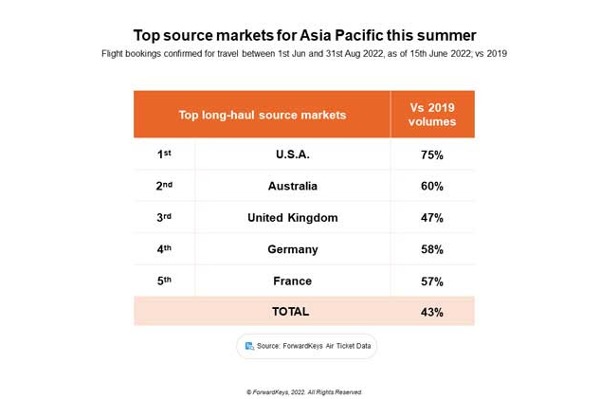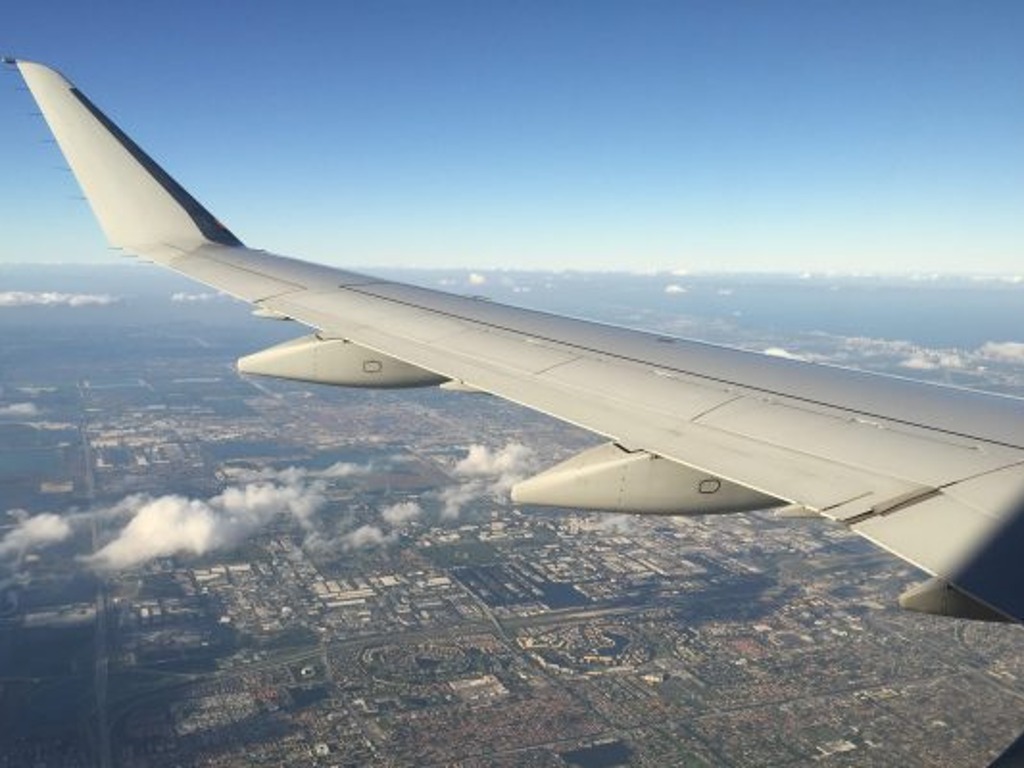US Visitors Lead Southeast Asia Revival

According to ForwardKeys while Southeast Asia has been lagging far behind the rest of the world in its recovery from the COVID-19 pandemic, visitors from the USA are coming back in substantially greater numbers than from other origin markets.
In the first five months of the year (Jan. 1 to May 31), travel to Southeast Asia reached just 18% of pre-pandemic levels, whereas travel to Europe reached 55%, to the Americas 66% and to the Middle East & Africa 64%.
Looking ahead to the summer months (June 1 to Aug. 31), flight bookings for Southeast Asia are at just 43% of pre-pandemic levels, whereas bookings for Europe are at 70%, for the Americas are at 78% and for the Middle East & Africa are at 85%.
Analysis of long-haul flight bookings this summer reveals that travel from the USA is set to reach 75% of where it was in 2019, before the COVID-19 outbreak. The next healthiest source market is Australia, where bookings are currently far behind, at 60% of 2019 levels. It is followed by the UK, at 47%, Germany, at 58%, and France at 57%.
The most popular destinations for US visitors are the Philippines, Singapore, and Indonesia. Helpfully, as US tourists are known for being high spending, average trip durations This visitor profile is also more affluent, with 17% flying in the front of the plane, compared to 9% in the equivalent months in 2019.
The destinations which are recovering most strongly are the Philippines and Singapore. Summer flight bookings for the Philippines are currently at 70% of pre-pandemic levels, for Singapore, 58%, for Thailand 35%, for Indonesia 41% and for Vietnam 32%. Travel to the Philippines is dominated by people returning to visit friends and relatives, whereas travel to other destinations is more for work and leisure.
Throughout the pandemic, airlines flying to Southeast Asia have provided more than enough seat capacity to accommodate passenger demand. However, in May 2022, the acceleration in demand started to outstrip capacity, which has been creating an upward pressure on air fares.
Government-imposed travel restrictions provide the best explanation of the observed recovery trends, as the destinations that relaxed restrictions earlier, such as the Philippines and Singapore, have recovered more strongly.
Olivier Ponti, VP Insights, ForwardKeys, said: “Travel during the pandemic has been a function of pent-up demand pushing in one direction and pandemic protection rules pushing back in the opposite direction. The recovery of air travel in Southeast Asia is lagging because travel restrictions there have been tougher. China, which used to be Southeast Asia´s largest source market, is still effectively closed; Japan, another major market for travel, is reopening very cautiously and seat capacity, which is constrained, is leading to higher air fares, which in turn dampens demand.”
Go to www.ForwardKeys.com for more.


